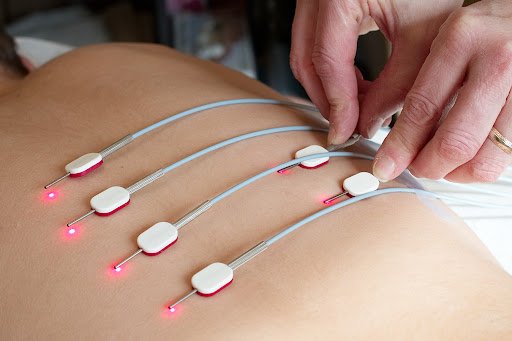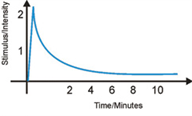Laser Acupuncture
About Laser Therapy
Laser acupuncture is the synthesis of the ancient treasure trove of Acupuncture and phototherapy (therapy with light). Acupuncture and phototherapy are both traditions that are thousands of years old. Both have changed and evolved further over the course of the centuries.
This is more than just the summation of two different forms of therapy. What makes laser acupuncture so interesting is that this combination improves and exponentially increases the effects of both acupuncture and phototherapy.
The invention of the laser was the actual milestone for phototherapy that made possible low-level laser therapy (LLLT) - the therapy with coherent light of low energy - a very sophisticated form of light therapy.
History
The theory of laser was first described in 1916 by Albert Einstein who paved the way for the development of the therapeutic laser that is used today for pain.
Hungarian physician Dr. Endre Mester was a pioneer of laser medicine, especially the use of Low Level Laser therapy (LLLT).
In 1967, he discovered that accelerated wound healing occurred with low intensity laser irradiation of wounds. Dr. Mester is considered the father of laser therapy.
Medical Lasers
Lasers for surgery: Surgical laser belong to laser class 4 and higher watt output (2-50 W continuous wave CW).
Laser for Bio-Stimulation (LLLT) : These laser belong to class 3B laser device with lower watt output as compared to class 4 laser with continuous, pulsed wave or super pulsed wave.
What is Low Level Laser Therapy (LLLT)?
Low level lasers are low energy uses. They are exclusively used for healing purposes. They are also referred as bio-stimulation lasers, soft lasers, cold lasers or healing lasers. These lasers have been classified as non-thermal modality (They do not generate heat in the tissue).
This is a form of energy that can be used to create physiological changes in the tissue. Laser therapy is a form of intensive light therapy, which uses directed light of defined wavelength and various frequencies.
The output of the laser differ from normal light source. There are three characteristics specific to laser beam.
- Monochromatic: single color (fixed wavelength)
- Collimated: unidirectional
- Coherence: all waves are synchronized
Physics of Laser
The laser beam being monochromatic each individual laser emits energy at a single wave length or colour on electromagnetic spectrum. Using different active laser medium will result in different wavelengths of light being produced. This is important because different wavelengths have different penetration capabilities in tissue.
Mostly, the low level lasers are in the red to infrared or near-infrared range meaning they may be invisible to human eye.
We can see more detail Wavelength on the electromagnetic spectrum and their perceived colours by human eye.
340-400 nm Near Ultraviolet (invisible)
400-430 nm Violet
430-500 nm Blue
500-560 nm Green
560-620 Yellow to Orange
620-700 nm Orange to Red
Over 700 Near-infrared (invisible)

Treatment Parameters
The various light sources are available under the category of light therapy device.
Wavelength (nm)
Power (mW)
CW or Pulsed or Super-pulsed
Energy Density (J/cm2)
Treatment duration (sec. or min.)
Wavelength
Wavelength is a distance between two peaks of the wave. It is denoted by symbol lambda (λ). Wavelength ids measured in nanometer (nm). The wavelengths used in therapeutic lasers are typically in 600-100 nm range.

A mechanism of Laser in tissue
A laser light at a wavelength of 600 – 970 nm is delivered to tissue via a probe through contact mode with the surface of skin.
The light enters the cell’s mitochondria and is absorbed by the chromosphores including the protein cytochrome c oxidase (CCO) which the increases its activity.
As a result of increase in activity, three molecules are affected: Adenosine Triphosphate (ATP), Reactive Oxygen Species (ROS), and Nitric Oxide (NO)

- An increase in ATP (the main source for the majority of cellular functions) increases the cell’s ability to fight infection and accelerates the healing process.
- The modulation of ROS (Reactive Oxygen Species) activates transcription factors positively impacting cellular repair and healing.
- The release of NO, a potent vasodilator, increases circulation, decreases inflammation, and enhances the transport of oxygen and immune cells throughout the tissue.
Laser therapy is the general term for various different methods. Depending on how the low-level laser is employed, the focus is more on other therapeutic. Photo-biological stimulation is the primary effect, which in laser acupuncture and resonance therapy is merely used for different purposes. Laser therapy encompasses three method:
- Bio-stimulation
- Laser Acupuncture
- Resonance therapy


